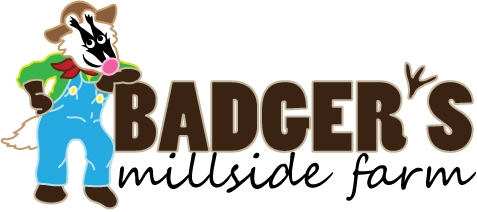Pastured Chicken
Building Flavor in Chicken
 The most influential factors to build flavor into your chicken dinner is age and diet. Simply put, the older the chicken, the more flavor it has. The more diverse the diet, the more flavor it has.
The most influential factors to build flavor into your chicken dinner is age and diet. Simply put, the older the chicken, the more flavor it has. The more diverse the diet, the more flavor it has.
“It tastes like chicken,” has become the default answer people give when they try to describe what another, less familiar meat tastes like. I’m sure you’ve heard this description in the past, too, but have you ever wondered what that really means?
Modern, mass produced chicken is tasteless. It’s bland. It’s like an artist’s blank canvas waiting for paint and imagination. That’s a sad commentary on the modern chicken that it’s so ubiquitous and unremarkable.
We know that not all chicken is tasteless. Pasture-raised chicken has a noticeably different taste and heritage chickens are marketed on their deeper flavor profile.
The Tasteless Modern Chicken
For context, a modern chicken is raised for 35 to 42 days old, and it eats a diet of corn, soybean meal, and filler by-products. Normally, you wouldn’t care about these details, but if you want to know why your chicken tastes like cardboard, these details hold the answer.
Poultry companies and the animal agriculture industry tout the rapid growth of meat birds like they’ve really accomplished something profound. They have taken something that historically grew for 12 weeks and cut the time to market in half. On the surface, that’s seems impressive, and it is if we only care about bigger and faster. Unfortunately, the modern meat birds have many side-effects of that selective breeding for rapid growth and oversize breasts.
As a society of eaters, we’ve traded animal welfare and flavor for as fast as possible.
The conventionally raised chicken is at risk for the following physical ailments: leg problems, heart problems, breast tissue with the texture of wood, breast tissue with the text of spaghetti, and white stripes in the breast meat. For consumers, the biggest causality of fast growth is a loss of flavor. Flavor builds in the chicken as it matures through life.
In the diet of a modern meat chicken, you’ll find a lot of soybean meal, which is what’s left from the whole soybean after the oil is removed (often through a chemical extraction process using hexane). What’s left, after the oil is extracted to make other things like partially hydrogenated cooking oils, is the protein of the soybean. The fat has been removed with the oil. To heap on more tasteless ingredients, many commercial feed rations use byproducts.
There are people who think that what a chicken eats has little effect on the chicken we eat. However, we know that the diet of the chicken is reflected in the meat we eat through a few simple observations.
The American Pastured Poultry Producers Association has published research that shows diet affects nutrition. Another example of diet influencing the meat is the addition of feed ingredients, such as fish meal. Poultry feed rations have a maximum amount of fish that can be in the feed, or it will affect the flavor of the meat. Some people are hyper-sensitive to fish flavor and can detect it’s presence, even in small quantities.
Why does pasture-raised chicken taste better?
 Pasture-raised chickens are typically raised to an older age than the commercial industry. The difference in age of a pastured broiler can be, 20%, 30%, or more compared to a commercial chicken you find in your grocer’s aisle. Depending on the breed and variety of chicken being raised, it can be significantly more. For example, the slower growing chickens we raise at the Badgers will be approximately 11 weeks old when they go to market.
Pasture-raised chickens are typically raised to an older age than the commercial industry. The difference in age of a pastured broiler can be, 20%, 30%, or more compared to a commercial chicken you find in your grocer’s aisle. Depending on the breed and variety of chicken being raised, it can be significantly more. For example, the slower growing chickens we raise at the Badgers will be approximately 11 weeks old when they go to market.
The aging chicken accumulates flavor.
One of the most radical differences in flavor comes from diet. At Badger’s, we focus on high-quality feed ingredients for our meat chickens. The pasture is the most obvious place where our birds builds a flavor. When they forage in their movable shelters, they’re eating grasses, clovers (and other legumes), grasshoppers, ticks, worms, insects, and whatever else they can find. They also eat their prepared feed, which may include corn, full-fat soybeans, alfalfa, oats, and wheat. We do not buy feed that includes bakery byproducts and other fillers.
Flavor in the Fat
People often try to buy lean meat that does not contain fat. When you buy boneless/skinless breasts, you’re consuming one of the leanest parts of the chicken and much of the fat is trimmed away. We can talk about the types of fat another time, but suffice it to say, the number one way to make chicken or any other meat taste like “nothing” is to remove all the fat. Fat is removed through genetics, through feeding, and through trimming.
I recommend you cook with the fat and the skin. If you really don’t want to eat the skin, remove after cooking.
Rubs, Marinades, and Seasonings Enhance Flavor
When you eat a pasture-raised chicken, the rubs, marinades, and seasonings should enhance the flavor, not be the flavor. You can cook a Badger chicken with little more than salt, pepper, and an onion. And it will not taste like chicken from the store. It will stand on it’s own. It will have flavor.
Ready to try some Badger chicken? Contact us.
Meat and Eggs


